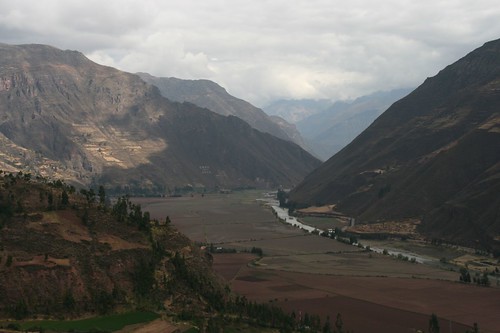
View of the Sacred Valley from the road between Cusco and Pisaq.
Our first stop was the Pisaq market. This was something I had been excited about because it is billed as being a market of traditional wares. I was sure to find knitting here! Two steps into the market I saw this:
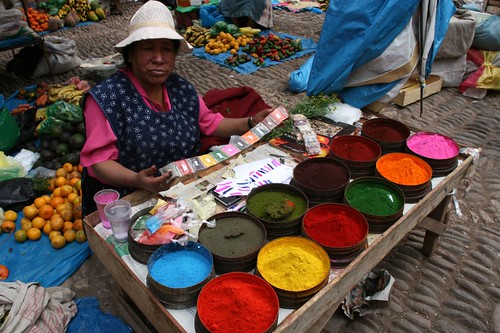
Woman selling natural dyes for wool.
Now I was told that it is illegal to bring most of these dyes into the US because of their natural content… but look at how bright and colorful!!! But I am a law-abiding citizen and this is a public place so as far as the blog is concerned there is no way I would even consider bringing any of it home. Not at all.
Most of the rest of market was the typical tourist goods sold everywhere in Peru:
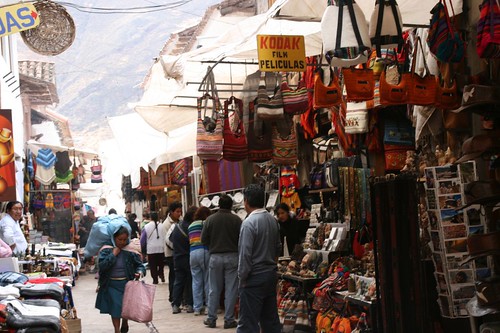
View of the market – I came home with one of those orange bags on the right.
But there were a few gems:
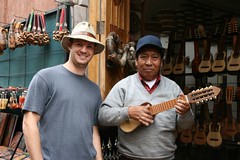
Matt with the guy who was selling traditional Peruvian musical instruments
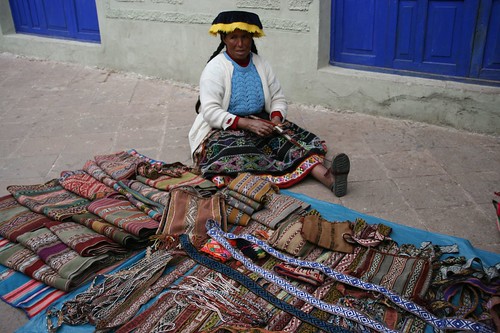
Woman weaving belts
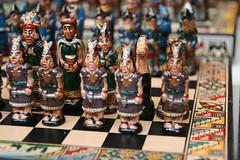
Handcarved Chess Set – Incas vs. Spanish! How fun is that! Matt brought one home.
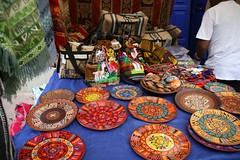
Handpainted plates
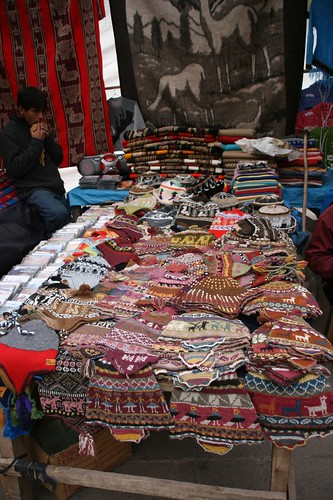
Handknit hats (rare amoungst the piles of chepo machine knit ones). I bought one of these, too.
From Pisaq it was on to Yucay for lunch. Yucay is an extremely small town - also very beautiful:
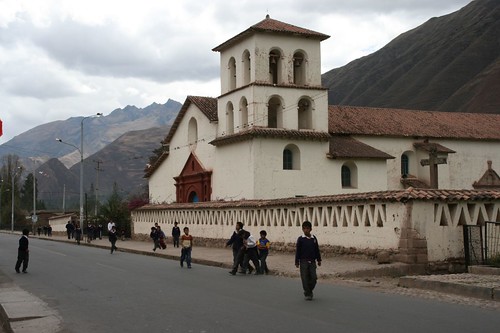
And we ate lunch in a lovely garden complete with a watermelon tree:
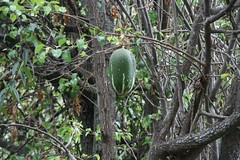
We thought this was a Watermelon growing in a tree and were completely freaked out. Turns out it's just a type of cucumber. Because that makes so much more sense.
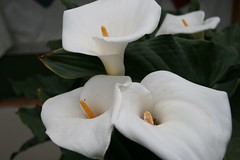
Lily
From there it was on to the town and complex of Incan ruins at Ollantaytambo. This town continuously inhabited since Incan times. And you know how I have a thing for towns built on top of other towns. Matt loved it because of its geography – it is built on a sliver of land where the Patacancha River flows into the Urubamba hugging the walls of a deep river valley. To him this was a very familiar layout! Ollantaytambo, like Pittsburgh, was an important military post controlling traffic along the river (presumably to Machu Picchu).
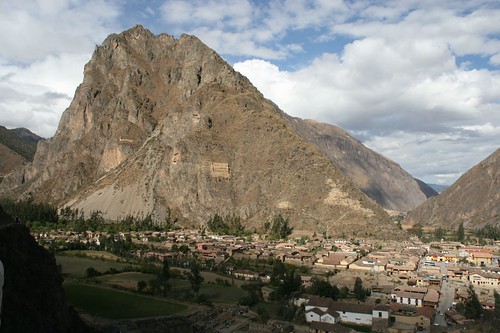
Olantaytambo was also an important agricultural center:
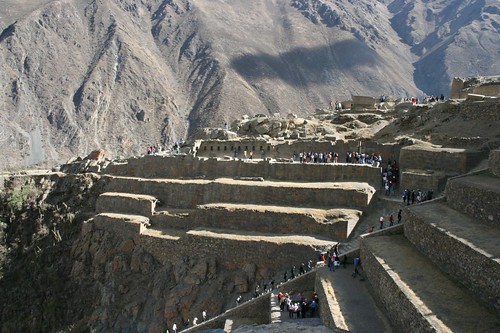
Incan agricultural terraces
And still is today. We were there during planting season – it seemed like every square inch that they could possibly cultivate through terracing was being cultivated!
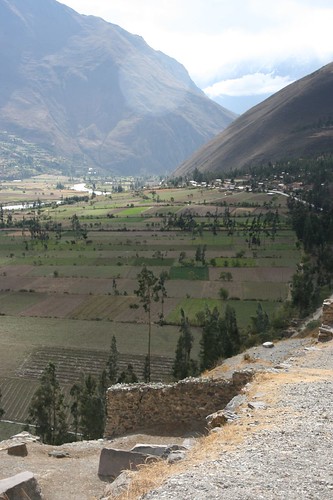
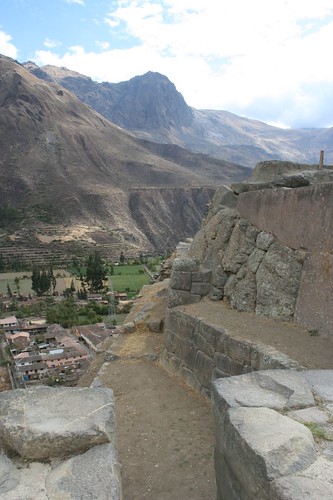
Ollantaytambo was also an important religious center located in a strategic position relative to the sun. Many, many interesting things happen here:
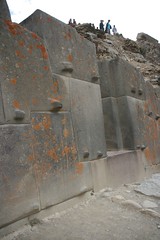
The carvings on this wall are lined up perfectly so that on the soltice (I don't remeber if it is spring or fall) the top stones cast a shadow on the bottom stones. Crazy.
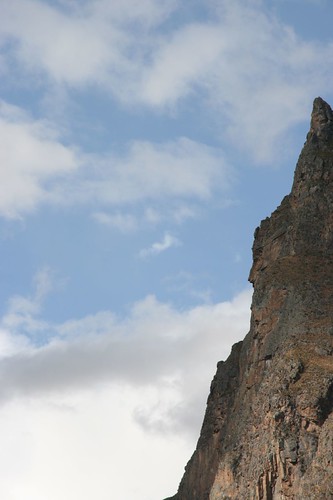
There is an Inca face carved into the side of this hill outside of Ollantaytambo. It is in the perfect position so that the sun hits it exactly on one of the Solestaces.
The Incas were amazing architects:
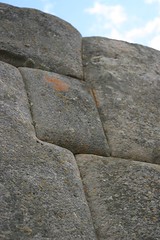
Tightly fit stones make up the walls of the Temple of the Sun

The large stones are set between smaller stones so that in an earthquake the small stones will allow the large stones to move and therefore not break. Matt’s an amazing architect too, btw.
I loved it there. And all of the stairs were a good warmup for the Inca Trail!
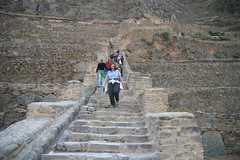
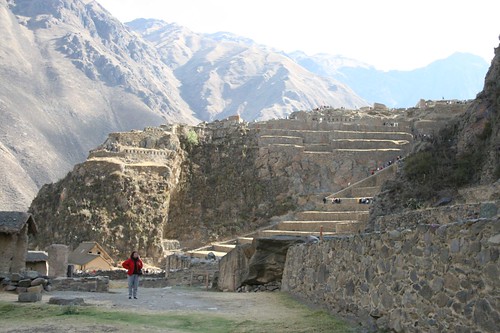
view of the whole complex
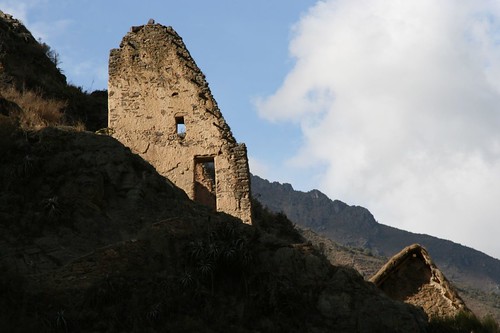
One of the storehouses - I love this pic!
Finally, we headed up into the mountains toward the town of Chinchero – stopping to admire the views along the way:
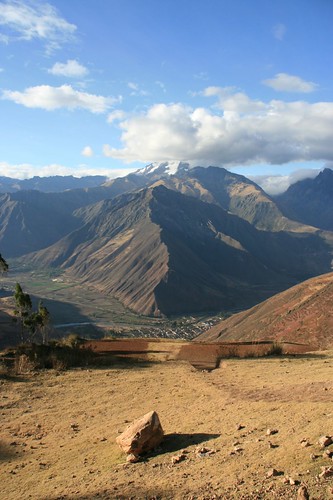
And I even saw a knitter in action (Actually I'd seen lots of kniters in Cusco but wasn't able to sneak a picture):

This girl was selling the typical alpaca wares to tourists who stopped at a lookout point. When she wasn't busy with the tourists she was knitting! I think it's a scarf and whatever it is is garter stitch with an occasional row of yarn overs.
Chinchero is another town built on Incan foundations.
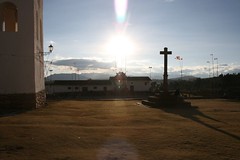
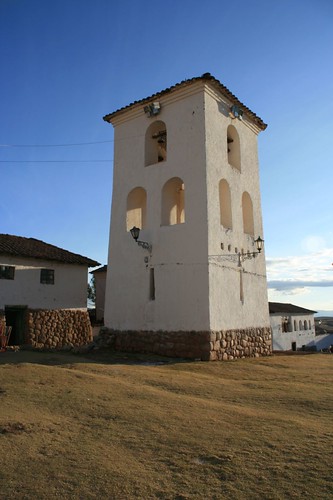
They are known for their elaborate weavings and luckily (I planned it this way) we were there on their market day:
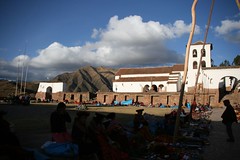
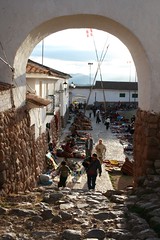
I tried to talk to one of the women weaving but she spoke no English (only Quechua).

So she went inside and got her granddaughter who I was able to kindof communicate with. In very broken Spanish I was able to get through that the “mother of my mother” is a weaver. She was really excited about this. Really excited. And she got through to me that she is a spinner and that her grandmother weaves with her handspun. Then she took me inside and showed me the natural dyes that she uses:

I ended up buying a beautiful shawl created by this family.
It was an awesome day. And there are even more pictures over on my flickr page! That night we had to get organized and repacked and make sure we had adequate rain gear because the next day we start the Inca Trail to Machu Picchu.

Love this post! Thank you for taking pictures of all the artists and their trade.
ReplyDeleteLovely, Lovely photos and story! Thanks for sharing these. Perhaps you should lead a textile tour there????
ReplyDeleteWhat beautiful photos! Looks like an amazing trip. : )
ReplyDeleteWOW! WOW! WOW! Did I mention wow? Because wow! ;-) So, how long ago did you go there? Looks like you had an amazing adventure!!!
ReplyDeleteAwesome! Your pictures are so great!
ReplyDeleteAmazing - I am so jealous!
ReplyDeleteBeautiful place - I'm so jealous of your trip!
ReplyDelete